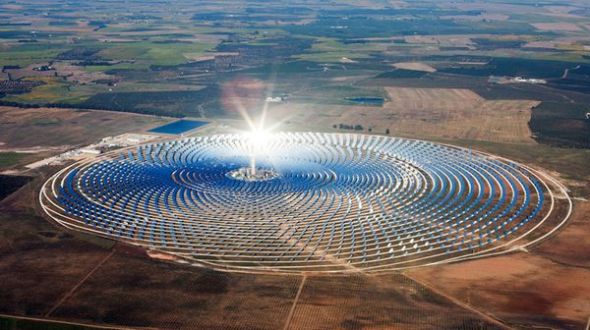 We live on a planet with finite resources; commodities such as oil and gas will not last forever. In realizing this the world’s largest energy conglomerates have been setting themselves up for the game of the next century; a defining break-through in end to end renewable energy. The race is on for the big investment opportunity of the next decade and this race is in the energy business. A prime candidates we have turned to is the Sun, a readily available, infinitely renewable nuclear reactor 95 million miles in space.
We live on a planet with finite resources; commodities such as oil and gas will not last forever. In realizing this the world’s largest energy conglomerates have been setting themselves up for the game of the next century; a defining break-through in end to end renewable energy. The race is on for the big investment opportunity of the next decade and this race is in the energy business. A prime candidates we have turned to is the Sun, a readily available, infinitely renewable nuclear reactor 95 million miles in space.
On the other side of this is the consumer’s stake in the access, viability and cost of renewable energy. As fossil fuels become scarcer the price for energy increases a lot of which will be coming from nature for the very first time.
As far back as 10,000 BC, history is abundant with carvings and writing depicting people’s respect and adoration for this object and it is easy to understand why. As the Sun would rise it brought vision, warmth, light, and security saving man from the cold, blind predator-filled darkness of the night.
These realities assured that for countless civilizations the Sun would become the most adored object in all of history from Babylonian to ancient Egyptian to Greek mythography, history has worshipped the Sun as a deity.
Because of the bounties of the Sun, man is now blessed with light heat, electricity, and magnetism even the power that drives the winds; all the abundant energies of the universe he so required to dominate the world.
How much energy comes from the Sun?
The possibilities are amazing.
In 2011, the International Energy Agency said that “the development of affordable, inexhaustible and clean solar energy technologies will have huge longer-term benefits. It will increase countries’ energy security through reliance on an indigenous, inexhaustible and mostly import-independent resource, enhance sustainability, reduce pollution, lower the costs of mitigating climate change, and keep fossil fuel prices lower than otherwise. These advantages are global. Hence the additional costs of the incentives for early deployment should be considered learning investments; they must be wisely spent and need to be widely shared”
the People and their Sun.
In 30 October 2012 Oxford researchers have developed a photovoltaic (PV) technology that has the potential to deliver low cost, efficient solar cells that can be readily incorporated into glass building façades.
According to consumer reports, Two thirds of UK households benefiting from solar energy say their bills have been significantly reduced since investing in the technology, with most making an average annual savings of hundreds of pounds and as technology and energy capture becomes more efficient, households will save more and more.
with continuing breakthroughs happening all the time, we can look forward to an energy secure future that is cheap and safe for the environment and future generations. Solar energy will play a part in helping to reduce the increasing burden on dwindling fossil fuel reserves.
The prospect that 2/3 of the world’s population have no access to have access to the light energies that come from our nearest star affirms the need to innovate in this field. And to ensure that the energies of the universe should not become corporate commodities, especially that which comes from the sky.
The solar array in Spain.




